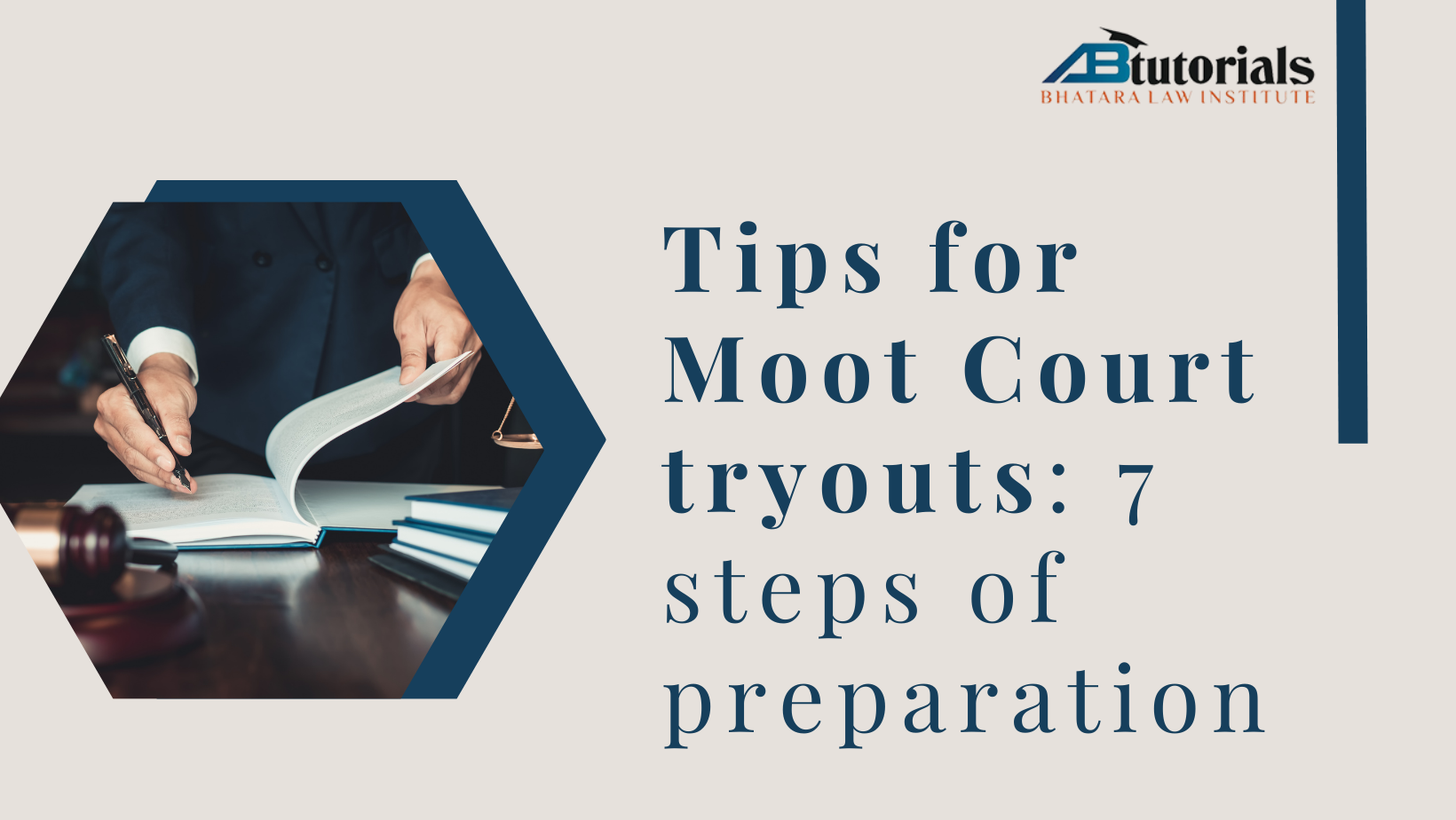Tips for Moot Court Tryouts: 7 Steps of Preparation
By AB Tutorials

Following are the 7 Steps to follow for Moot Court Preparation:
1. Read the Moot Court Problem
Familiarize yourself with the major legal and factual points of your case by carefully reading the moot court problem. The goal of your oral argument is to state the best points for your side persuasively and forcefully, to clarify points not well made in the written problem and to address weaknesses in your case as well as counterpoints to your opponent’s arguments.
2. Know the facts of the case
You should know and understand every page that makes up the argument. During oral argument, you should be the expert on the facts and be able to field any questions from the judges regarding the record.
3. Read the important authorities relied upon by each side
Some moot court judges will be familiar with main authorities, so be prepared for questions on the holdings of these cases as well as the reasoning behind the relevant holdings. If you don’t have time to read the entire opinion, then read the court’s disposition on the issue, the relevant issue section and how the court applied their reasoning to the facts. At the very least, you need to be able to understand how this case applies to your case, how the facts are similar or different and how the court ultimately ruled.
4. Create a unifying theme
Choose a central theme to focus and strengthen your argument. A theme will set the tone for your oral argument, and you’ll want to return to it as you answer questions from the judges. As an advocate, you want to make that theme resonates so that the judges remember your central message long after you’ve left the room.
5. Prepare responses to likely questions
In addition to thinking about what questions you want to answer, play devil’s advocate. What are the weakest points in your case? What would you have most difficulty responding to? What questions do you dread?
Spend time coming up with candid answers to all of these types of questions. Nothing is worse than seeming flustered after a question from the bench. And nothing looks better than giving a great answer to a question that the judge thinks will stump you.
6. Create a brief outline of your argument
Outline on a single sheet of paper, or on the inside of a manila folder that will be open in front of you at the podium. Include your major points so that you can use it as a quick reference — but do NOT write every word of your argument down.
Oral arguments are supposed to be a conversation between you and the court. It should be an interchange of ideas between you and the judges. This means that you want to maintain as much eye contact as possible and remain flexible so that you can engage in a dialogue with your panel.
If you want, you can write out your introduction as a bit of a security blanket. If you have time, it can be helpful to memorize the first minute or so because it will help you feel settled at the beginning.
In your outline — near the top and the bottom — be sure to include exactly what you are asking the court to do. That needs to be clear to you and clear to the judges, so it’s good to mention it during your introduction as well as provide a strong prayer for relief during your close.
7. Practice
While this seems a bit obvious, but it’s one of the most important parts of preparation. Run through it a few times by yourself without any interruptions or observers. This will give you an idea of what is working and what sounds good. You will likely find yourself revising your outline as you practice.
After practicing the arguments alone a few times, then practice in front of a friend or take a video of yourself. Yes, I said it. Few of us like to watch ourselves in a video, but this can be a great way for you to see your nervous ticks and correct your problems.
All the Best!
Happy Mooting!
Source: https://legal.thomsonreuters.com/blog/tips-for-moot-court-tryouts-7-steps-of-preparation/
Recent Articles
-
01 Jul, 2025
Introduction: New Frontiers of Legal Practice and Digital Contracts Using Blockchain Technology
By ABT Team
-
24 Jun, 2025
Careers in Intellectual Property Rights Law: Protecting Innovations
By ABT TEAM
-
17 Jun, 2025
Artificial Intelligence in Law: Revolutionising Legal Practice
By ABT Team
-
10 Jun, 2025
How to Build a Career in Environmental Law in India: Addressing Ecological Challenges through Legal Avenues
By ABT Team
-
03 Jun, 2025
LEGAL AID FOR MARGINALIZED COMMUNITIES: BUILDING A CAREER IN PRO BONO LEGAL SERVICES
By ABT Team
-
29 May, 2025
The Role of Lawyers in Social Justice Movements: Careers in Human Rights Law and Public Interest Litigation
By ABT Team
-
27 May, 2025
Becoming a Public Prosecutor in India: Roles, Responsibilities, and Career Path
By ABT Team
-
20 May, 2025
Data Privacy and Cybersecurity Laws in India: Career Prospects in an Increasingly Digitalized Economy
By ABT Team
-
15 May, 2025
Legal Obligations of Indian Educational Institutions: Student Rights and Compliance Ensuring
By ABT Team
-
13 May, 2025
"Navigating Internships in India: Legal Requirements and Practical Challenges for Law Students"
By ABT Team

